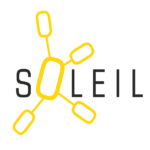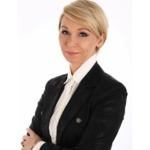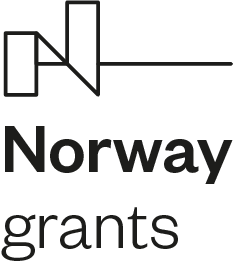
Overview
Research interests of SOLEIL Group focus on design, synthesis & application of nanomaterials and advanced architectures for solar energy technologies and photo-driven biocatalytic applications. However, now, it starts to be obvious that with deep knowledge on synthesis and functionalization of metal oxide nano-architectures for solar energy conversion we can start to ask new questions about underlying understanding of elementary chemical reactions and photoelectrochemical processes and finally address them by new ultrafast spectroscopic and in-situ conceptual techniques allowing to directly investigate charge transfer kinetics phenomena We believe, that this conceptual approach to the molecular systems to identify the major bottlenecks hampering the efficiency of current solar systems has a bright future.
Research Topics:
Investigation of the combined electro-photo-reduction of CO2 at selected catalysts taking in parallel, profit from the extra activation of the process provided by the plasmonic nanostructures
Identification and recognition of the kinetic processes governing the performance of the earth abundant materials and their integrated systems with use of the ultrafast TAS approach (combined charge carrier dynamics & kinetic analysis)
Identification & synthesis of radically new photoactive materials
Design, construction & understanding of a sensing mechanism of the photoelectrochemical biosensors based on the polycrystalline semiconductors and demonstrate a proof of concept through the quantification of the biosensing activity and efficiency of the overall PEC sensor for a number of selected bioanalytes.

phone: +48 22 55 43711
room: 05.03
Renata Solarska, PhD, DSc
Email: r.solarska@cent.uw.edu.pl; rsolarska@gmail.com
Tel.: +48 22 55 43711
Room: 05.03
Head of SOLEIL – Solar Energy Innovation Laboratory
Since April 2016 Assistant Professor in the Center of New Technology at University of Warsaw. She received her PhD degree in Chemistry from University of Geneva in 2006 and since then she has been involved in different initiatives and research devoted to nanostructured materials and their use for energy harvesting, conversion and environmental approaches. She has nearly two decades of expertise in electrochemistry, followed by photoelectrochemistry and photophysiscs of semiconductor, metals and hybrid nanostructures. Besides her research activity, she is also involved in the activity of the Europe Section of the Electrochemical Society as a vice-chair, with an aim to support activities in electrochemistry and solid state science and recognition of the society among scientists.
Education & Degrees:
2012/ 2013 Diploma in Management of Research Projects & Development Activities – University of Economics and Innovation, Lublin, Poland
2006 Ph.D. in Chemistry from University of Geneva, Switzerland
2005 – 2007 Study in Pharmaceutical Sciences – University of Geneva, Switzerland
2002 – 2006 Ph.D. study at University of Geneva, Switzerland
2000 – 2002: Pharmacy study – Academy of Medicine, Warsaw, Poland
2001 M.Sc. in Chemistry from University of Warsaw, Poland
Positions & Professional Experience:
Jan 1, 2019 Chairperson of the ECS Europe Section
Oct.2018 Group Leader of Laboratory of Solar Energy Innovations_SOLEIL in Centre of New Technologies University of Warsaw (CeNT UW)
Since 2013 Adiunct/ Assistant Professor in Laboratory of Photoelectrochemistry and Solar Energy Conversion in CeNT UW, University of Warsaw
2009-2016 Adiunct at the Faculty of Chemistry, University of Warsaw
2009 Grantee of “Homing” Programme of Polish Foundation for Science (FNP)
2008 Research Fellow within the frame of an individual grant from SNF/JSPS in Photocatalytic Center of NIMS in Tsukuba, Japan
2007- 2009 Research Associate in Laboratory for High Performance Ceramics, EMPA Materials Science and Technology, Dubendorf, Switzerland
2006 – 2007 Postdoctoral Fellow in Department of Crystallography, University of Geneva
2002 – 2006 Ph.D study in Department of Inorganic, Analytical and Applied Chemistry, University of Geneva under research supervision of Prof. Jan Augustynski
2002 Research trainee in Laboratory of Supramolecular Chemistry in Institute of Physical Chemistry, Polish Academy of Sciences
Ongoing Projects:
CSA FET Flagships –816336 SUNRISE _Horizon2020 EU
| Title | PI | Period | Source |
|---|---|---|---|
| Design, construction and investigations of earth abundant materials based heterojunctions for high efficiency solar energy conversion | Renata Solarska | 2018-2022 | SONATA BIS NCN |
| Insight into combined electrochemical-photochemical activation of carbon dioxide | Renata Solarska | 2019-2019 | OPUS NCN |
Selected Publications:
Photoelectrochemical Water Splitting on Very Thin WO3 Films Activated by High Temperature Tin Diffusion; A. Jelinska, K.Bienkowski, M. Sarnowska, M. Pisarek, M. Strawski, D. Kurzydlowski, R. Solarska & J. Augustynski; just accepted in ACS Catalysis (2018)
Enhanced Photo-Electro CO2 Reduction System Based on Mixed Cu2O Nonstoichiometric-TiO2 Photocathode; E. Szaniawska, K. Bienkowski, P. Kulesza & R. Solarska; Catalysis Today 300 (2018) 145-151
Plasmon resonance-enhanced photoelectrodes and photocatalysts; J. Augustynski, K. Bienkowski, R. Solarska; Coordination Chemistry Reviews 325 (2016) 116-124
Solar-driven water oxidation mediated by an electron-coupled-proton buffer; L. G. Bloor, R. Solarska, K. Bienkowski, P. J. Kulesza, J. Augustynski, M. D. Symes, and L. Cronin; Journal of the American Chemical Society 138 (2016) 6707-6710
Highly efficient and stable solar water splitting at (Na)WO3 photoanodes in acidic electrolyte assisted by non-noble metal oxygen evolution catalyst; M. Sarnowska, K. Bienkowski, R. Solarska & J. Augustynski; Advanced Energy Materials 6 (2016) 1600526
Enhanced water splitting at thin film tungsten trioxide photoanodes bearing plasmonic gold–polyoxometalate particles; R. Solarska, K. Bieńkowski, S. Żołądek, A. Majcher, T. Stefaniuk, P. J. Kulesza, J. Augustyński; Angew. Chem. Int. Ed. 53 (2014) 14196-14200
Microwave-assisted nonaqueous synthesis of WO3 nanoparticles for crystallographically oriented photoanodes for water splitting; S. Hilaire, M. J. Süess, N. Kränzlin, K. Bieńkowski, R. Solarska, J. Augustyński, M. Niederberger; J. Mater. Chem. A 2 (2014) 20530-20537
Nanoporous WO3–Fe2O3 films: structural and photo-electrochemical characterization; R. Solarska, K. Bieńkowski, A. Królikowska, M. Dolata, J. Augustyński; Funct. Mater. Let. 7 (2014) 1440006
To what extent do the nanostructured photoelectrodes perform better than their macrocrystaline counterparts? J. Augustyński, R. Solarska: Catalysis Science and Technology 3 (2013) 1810-1814
Highly efficient water splitting by a dual-absorber tandem cell; J. Brillet, J-H. Yum, M. Cornuz, T. Hisatomi, R. Solarska, J. Augustyński, M. Graetzel, K. Sivula; Nature Photonics 6 (2012) 824-828
Highly stable efficient visible-light driven water photoelectrolysis system using nanocrystalline WO3 photoanode and methane sulfonic acid electrolyte; R. Solarska, R. Jurczakowski, J. Augustyński; Nanoscale 4 (2012) 1553-1556
Enhancement of WO3 performance through resonance coupling with Ag nanoparticles; R. Solarska, A. Królikowska, K. Bieńkowski, T. Stefaniuk, J. Augustyński; Energy Procedia, 22 (2011) 137-146 (open access)
Metal oxide photoanodes for water splitting; J. Augustyński, B.D. Alexander, R. Solarska; Top. Curr. Chem. 303 (2011) 1-38
Silver nanoparticles-induced photocurrent enhancement at WO3 photoanodes; R.Solarska, A. Królikowska, J. Augustyński; Angew. Chem. Int. Ed. 49 (2010) 7980-7983
Tailoring the morphology of WO3 films with substitutional cation doping: Effect on the photoelectrochemical properties; R. Solarska, B.D. Alexander, A. Braun, R. Jurczakowski, G. Fortunato, M. Stiefel, T. Graule, J. Augustyński: Electrochim. Acta 55 (2010) 7780-7787
Nanoscale calcium bismuth mixed oxide with enhanced photocatalytic performance under visible light; R.Solarska, A. Heel, J. Ropka, A. Braun, L. Holzer, J. Ye, T. Graule; Applied Catalysis A: General 382 (2010) 190-196
Highlight: Metal oxide photoanodes for solar hydrogen production; B. D. Alexander, P. J. Kulesza, I. Rutkowska, R. Solarska & J. Augustyński, J. Mater. Chem. 18 (2008) 2298-2303
Patent: Electrodes with tungsten oxide photovoltaic film on glass; J. Augustynski, M. Ulmann, R. Solarska,; Brit. UK Pat.Appl. (2005), Int. Pub. Nº : WO 2005/103329 A2
Renata Solarska, PhD, DSc
Postdoctoral Fellows:
Krzysztof Bieńkowski, PhD
Kathrick Ramalingam, PhD
Witold Szejgis, PhD
Linh Trinh, PhD
PhD student:
Nabila Nawaz, MSc
Research Technician:
Aleksandra Parzuch, MSc
| Title | Project Leader | Project period | Project funding |
|---|---|---|---|
| HERA (Hydrogen Energy Rechargable Architectures): Coupling of on-demand hydrogen generation and storage | Renata Solarska | 2020 - 2023 | NCBiR (Norwegian funds) |
| Design, construction and investigations of earth abundant materials based heterojunctions for high efficiency solar energy conversion | Renata Solarska | 2018 - 2023 | SONATA BIS 7, NCN |
| Insight into combined electrochemical-photochemical activation of carbon dioxide | Renata Solarska | 2016 - 2020 | OPUS 9, NCN |
Kałek, M., Kraszewski, K., Tomczyk, I., Bieńkowski, K., Solarska, R. (2020)
Chem. Eur. J. (26), 11584-11592
Jadwiszczak, M., Jakubow‐Piotrowska, K., Kedzierzawski, P., Bienkowski, K., & Augustynski, J. (2019).
Adv. Energy. Mater. 10(3), 1903213.
Szaniawska, E., Bienkowski, K., Rutkowska, I. A., Kulesza, P. J., & Solarska, R. (2018).
Catalysis Today, 300, 145-151.
Bloor, L. G., Solarska, R., Bienkowski, K., Kulesza, P. J., Augustynski, J., Symes, M. D., & Cronin, L. (2016).
Journal of the American Chemical Society, 138(21), 6707-6710.
Augustynski, J., Bienkowski, K., & Solarska, R. (2016)
Coordination Chemistry Reviews, 325, 116-124
Sarnowska, M., Bienkowski, K., Barczuk, P. J., Solarska, R., & Augustynski, J. (2016).
Advanced Energy Materials, 6(14), 1600526.
Solarska, R., Bienkowski, K., Zoladek, S., Majcher, A., Stefaniuk, T., Kulesza, P. J., & Augustynski, J. (2014).
Angewandte Chemie International Edition, 53(51), 14196-14200.
Solarska, R., Bieńkowski, K., Królikowska, A., Dolata, M., & Augustyński, J. (2014).
Functional Materials Letters, 7(06), 1440006.
Hilaire, S., Süess, M. J., Kränzlin, N., Bieńkowski, K., Solarska, R., Augustyński, J., & Niederberger, M. (2014).
Journal of Materials Chemistry A, 2(48), 20530-20537.
Augustynski, J., & Solarska, R. (2013).
Catalysis Science & Technology, 3(7), 1810-1814.
Solarska, R., Krolikowska, A., Bienkowski, K., Stefaniuk, T., & Augustynski, J. (2012).
Energy Procedia, 22, 137-146.
Brillet, J., Yum, J. H., Cornuz, M., Hisatomi, T., Solarska, R., Augustynski, J. & Sivula, K. (2012).
Nature Photonics, 6(12), 824-828.
Solarska, R., Jurczakowski, R., & Augustynski, J. (2012).
Nanoscale, 4(5), 1553-1556.
Augustyński, J., Alexander, B., & Solarska, R. (2011).
Photocatalysis, 1-38.
Solarska, R., Heel, A., Ropka, J., Braun, A., Holzer, L., Ye, J., & Graule, T. (2010).
Applied Catalysis A: General, 382(2), 190-196.
Solarska, R., Alexander, B. D., Braun, A., Jurczakowski, R., Fortunato, G., Stiefel, M., ... & Augustynski, J. (2010).
Electrochimica Acta, 55(26), 7780-7787.
Alexander, B. D., Kulesza, P. J., Rutkowska, I., Solarska, R., & Augustynski, J. (2008).
Journal of Materials Chemistry, 18(20), 2298-2303.
Project title: HERA (Hydrogen Energy Rechargable Architectures): Coupling of on-demand hydrogen generation and storage
Source of funding: NCBiR (Norwegian funds)
Total budget: 6 475 885 PLN
Project duration: 01.07.2020 – 01.07.2023
 |
 |


